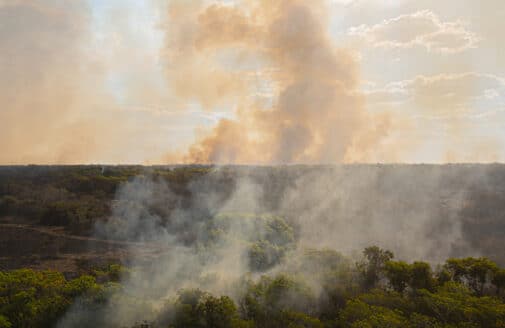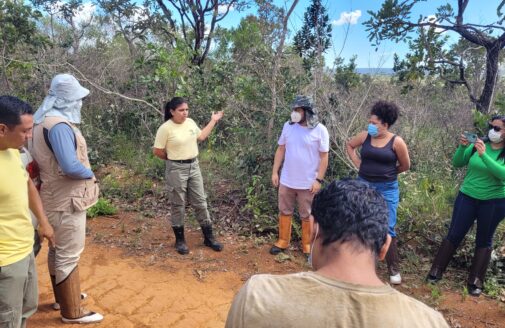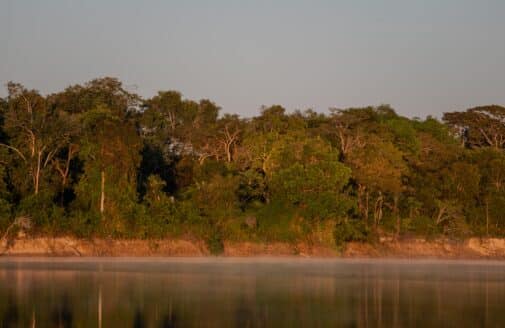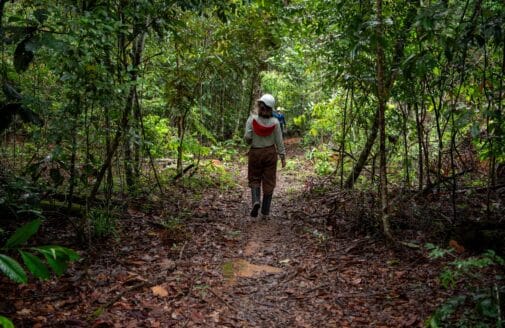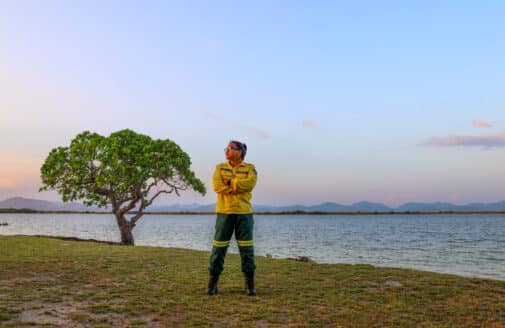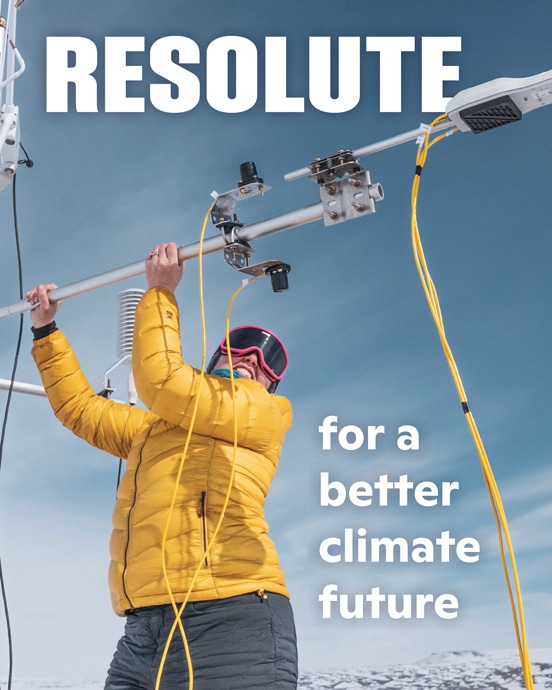The vicious cycle of climate change, deforestation, and fire in the Amazon
As long as deforestation continues in the Amazon, so will fire. And climate change is making it worse.
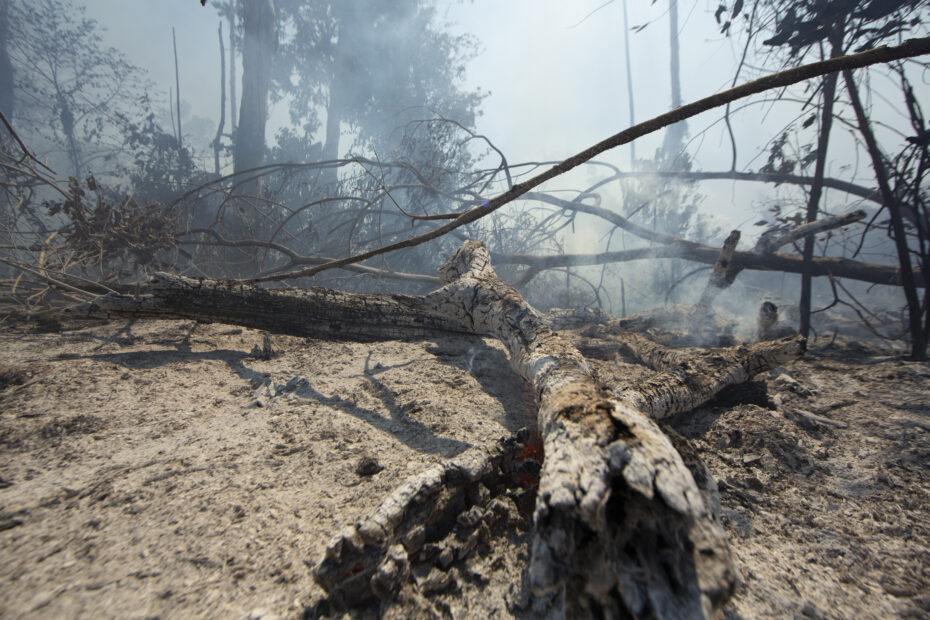
Cut and burned trees in the Amazon.
photo by Illuminati Filmes
The Amazon rainforest is one of the planet’s best natural climate solutions. Roughly 123 billion tons of carbon are estimated to be stored in the trees and soils of the Amazon and, if protected, it has the power to continue sequestering billions of tons of carbon each year.
But that irreplaceable carbon sink is under steady threat from a cycle of deforestation, fire, and drought that is both exacerbated by and contributing to climate change. Preliminary analysis from Woodwell of last year’s data has outlined that the most vulnerable regions of the Amazon are where drought and deforestation overlap.
2021 data shows deforestation drives fire in the Amazon
Unlike temperate or boreal forest ecosystems—or even neighboring biomes in Brazil—fires in the Amazon are almost entirely human caused. Fire is an intrinsic part of the deforestation process, usually set to clear the forest for use as pasture or cropland. Because of this, data on deforestation can provide a good indicator of where ignitions are likely to happen. Drought fans those flames, producing the right conditions for more intense fires that last longer and spread farther. Examining the intersection between drought and deforestation in 2021, Woodwell identified areas of the Amazon most vulnerable to burning.
Areas of deforestation combined with exceptionally dry weather to create high fire risk in northwestern Mato Grosso, eastern Acre, and Rondonia. Although drought conditions shifted across the region throughout the course of the year, deforestation caused fuel to accumulate along the boundaries of protected and agricultural land.
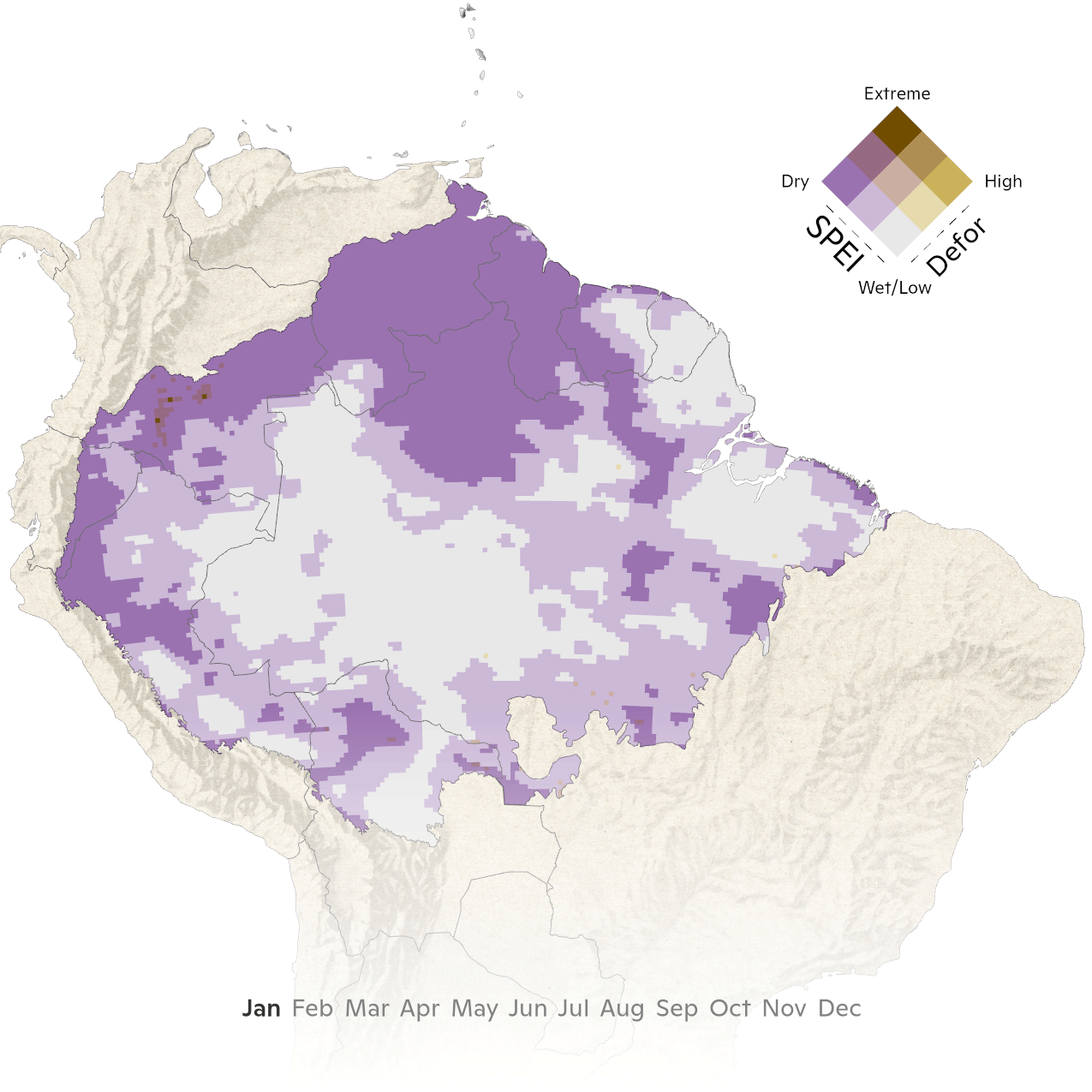
map by Greg Fiske
These areas of concentrated fuel showed the most overlap with fires in 2021, indicating that without the ignition source that deforestation provides, fires would be unable to occur, even during times of drought.
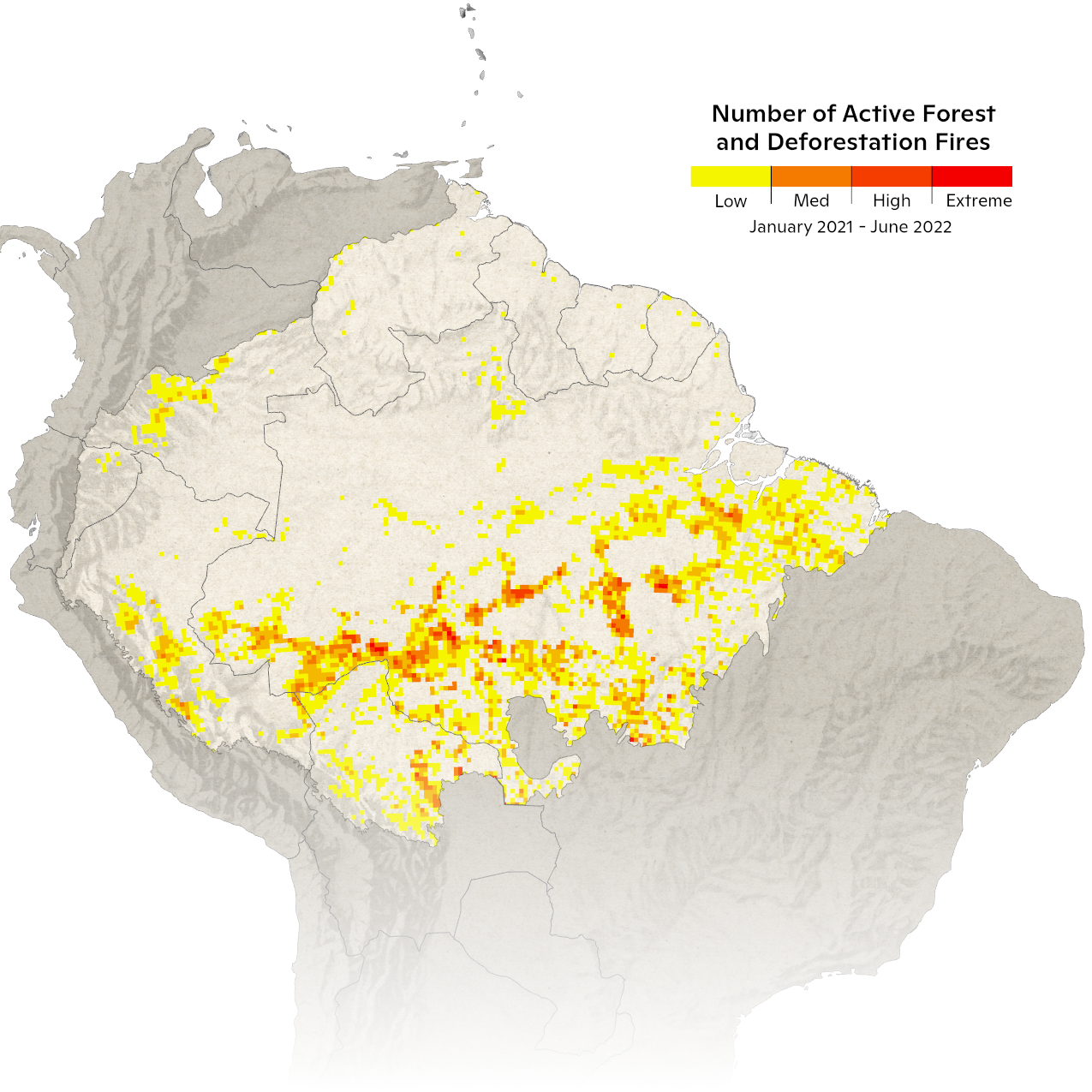
map by Greg Fiske
In June of 2021, we identified a dangerous and flammable combination of cut, unburned wood and high drought in the municipality of Lábrea, that put it at extreme risk of burning. Data at the end of December of 2021 confirmed this prediction. The observed fire count numbers from NASA show, Lábrea led all other municipalities in fires last year.
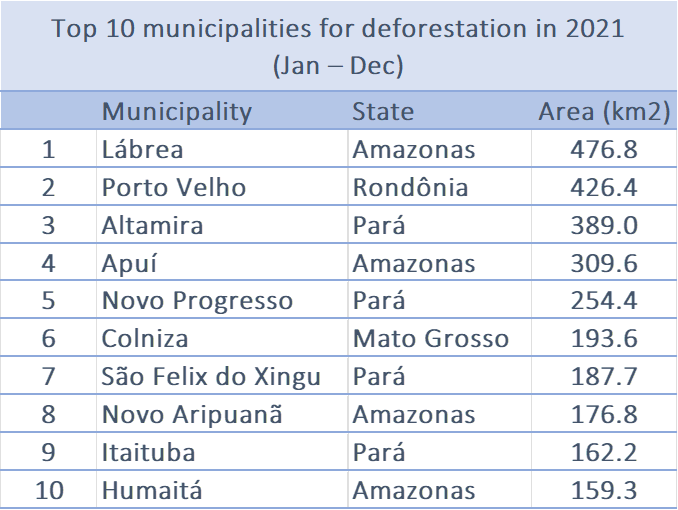
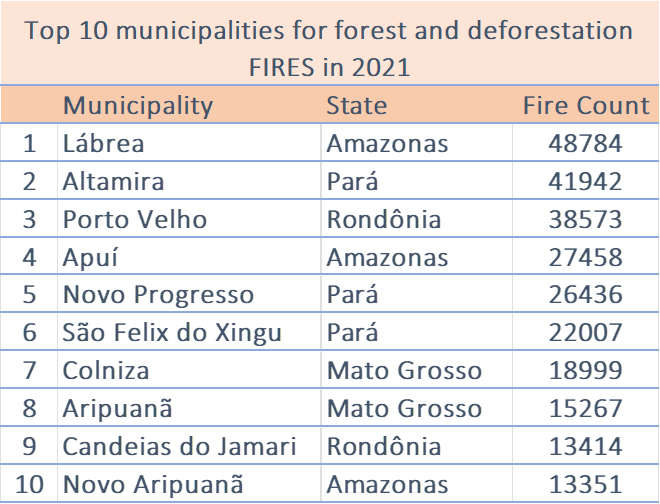
Municipalities with the highest deforestation numbers (left) align well with observed fires (right). Lábrea ranks highest in both.
Fires and climate change form a dangerous feedback loop
As a result of deforestation in 2021, at least 75 million tons of carbon were committed to being released from the Amazon. When that cut forest is also burned, most of the carbon enters the atmosphere in a matter of days or weeks, rather than the longer release that comes from decay.
This fuels warming, which feeds back into the cycle of fire by creating hotter, drier, conditions in a forest accustomed to moisture. Drought conditions weaken unburned forests, especially around the edges of deforestation, which makes them more susceptible to burning and releasing even more carbon to the atmosphere to further fuel warming.
Fire prevention strategies enacted by the current administration over the past three years have been insufficient to curb burning in the Amazon, because the underlying cause of deforestation remains unaddressed. Firefighting crews are not sufficiently supported to continue their work in regions like Lábrea that are actively hostile to combating deforestation and fire. If deforestation has occurred, fire will follow. To ensure the safety of both the people and the forests in these high-risk municipalities, the root causes of deforestation must be addressed with stronger and more strategic policies and enforcement.




